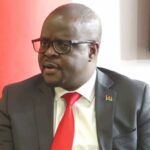No featured image set for this post.
BWB RATIONING WATER SUPPLY
Published on November 3, 2022 at 4:33 PM by Alinafe Gamaliel
Blantyre Water Board (BWB) has issued a public statement that it will be rationing water supply while they investigate and rectify why there are intermittent supply situation being experienced in most parts of the city.
The statement says BWB has been receiving complaints of intermittent water supply situation and upon investigations on the root cause they established that water levels in most of their tanks were unable to reach the maximum levels despite continuous pumping.
“The Board is therefore further investigating the cause of the situation. While investigations are underway, the Board will start rationing water supply so that there is equal distribution that is available in the supply system.
“The Board is assuring customers that all efforts are being made to ensure that the water situation returns to normal as soon as possible,” said the statement issued on 1st November 2022.
BWB relies on power from Electricity Supply Corporation of Malawi (ESCOM), which is facing challenges due to the loss of 130 megawatts at Kapichira Power Station due to January’s Cyclone Ana — but efforts are being made to restore the power by December this year.
In December 2021, when the utility service provider launched a 5-year Strategic Plan (2020-2025) which aims at providing best services to residents within Blantyre City and surrounding areas ,BWB chairperson, George Nnesa disclosed that they would build solar plant at Walker’s Ferry to reduce cost of paying for ESCOM.
This is in the Board’s Strategic Plan in order to reduce electricity bills and to have the new pipeline from Shire River so that they can double the capacity and be able to meet the growing demand of water in the next five years.
When Minister of Water & Sanitation, Abida Mia joined BWB in a tree planting exercise at its Mudi catchment area as well as touring Walkers Ferry, Nnesa said the Board will set up a solar power generation plant because they spend up to K1.2 billion every month to pay to ESCOM, which is quite heavy for BWB.
“This is as a result of increases in tariffs,” he told the Minister. “We are going to have our solar plant which will generate 30 megawatts. We use about 26 megawatts at the moment and our plan is to have 50 megawatts.
“The project will take 24 months to be completed. We could have started by now but the delay was as a result of CoVID-19 issues but we are in the final stages.”
Nnesa had said upon its completion, the new pumping intake will be able to generate 299,000 cubic meters of water from the current 101,000 cubic meters being pumped at Walkers Ferry.
“Once completed, Walkers Ferry will no longer be our water intake but all the other processes like treatment among others will remain,” he said.
According to Nnesa, the cost of the whole project is US$112 million (approximately K92.4 billion), a loan facility which the board has secured from Exim Bank of India.
The Strategic Plan is going to counter increasing social and economic challenges the organisation is facing due to urbanisation and the hostile economic operating environment.
Source: MANA


